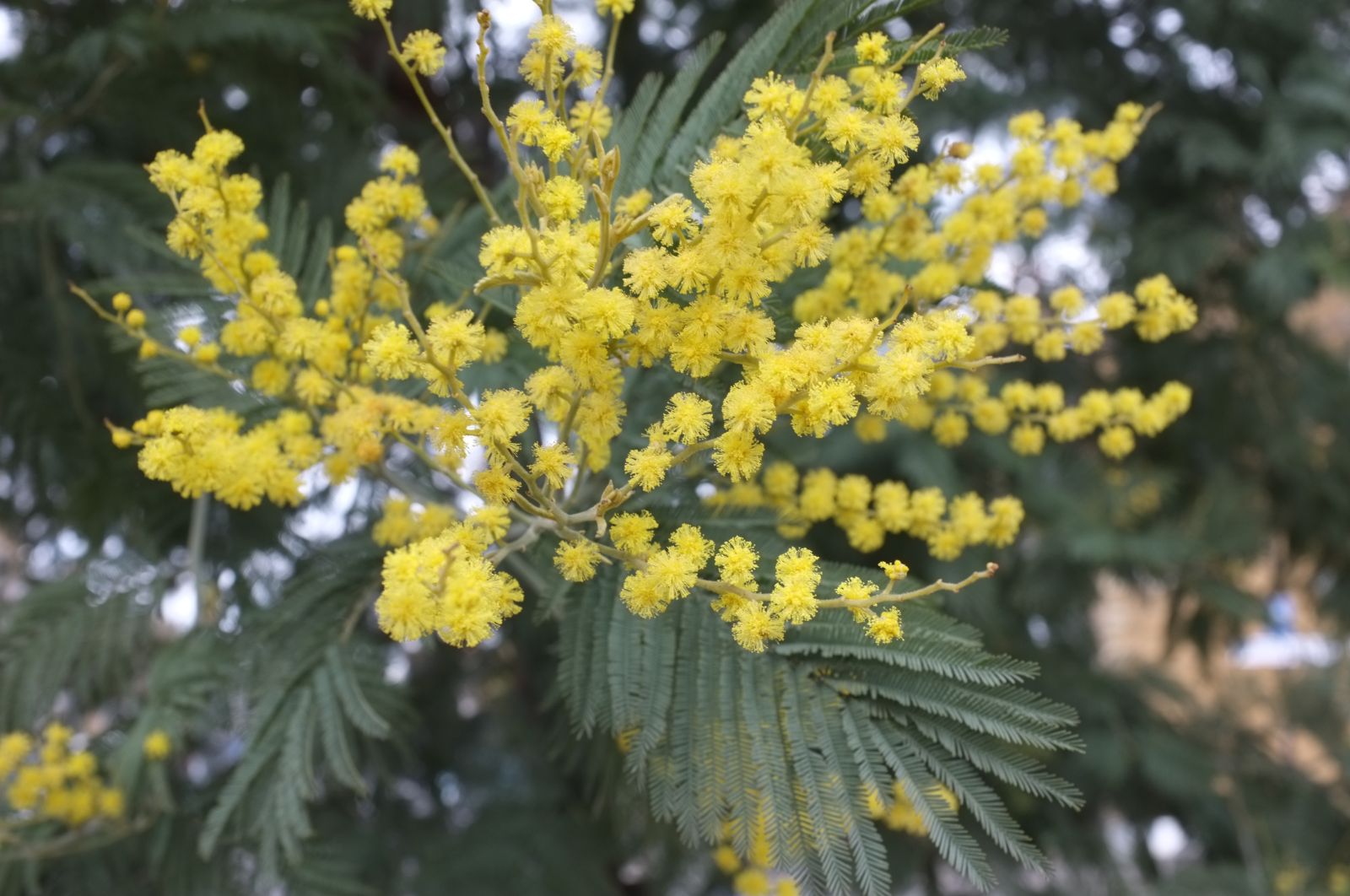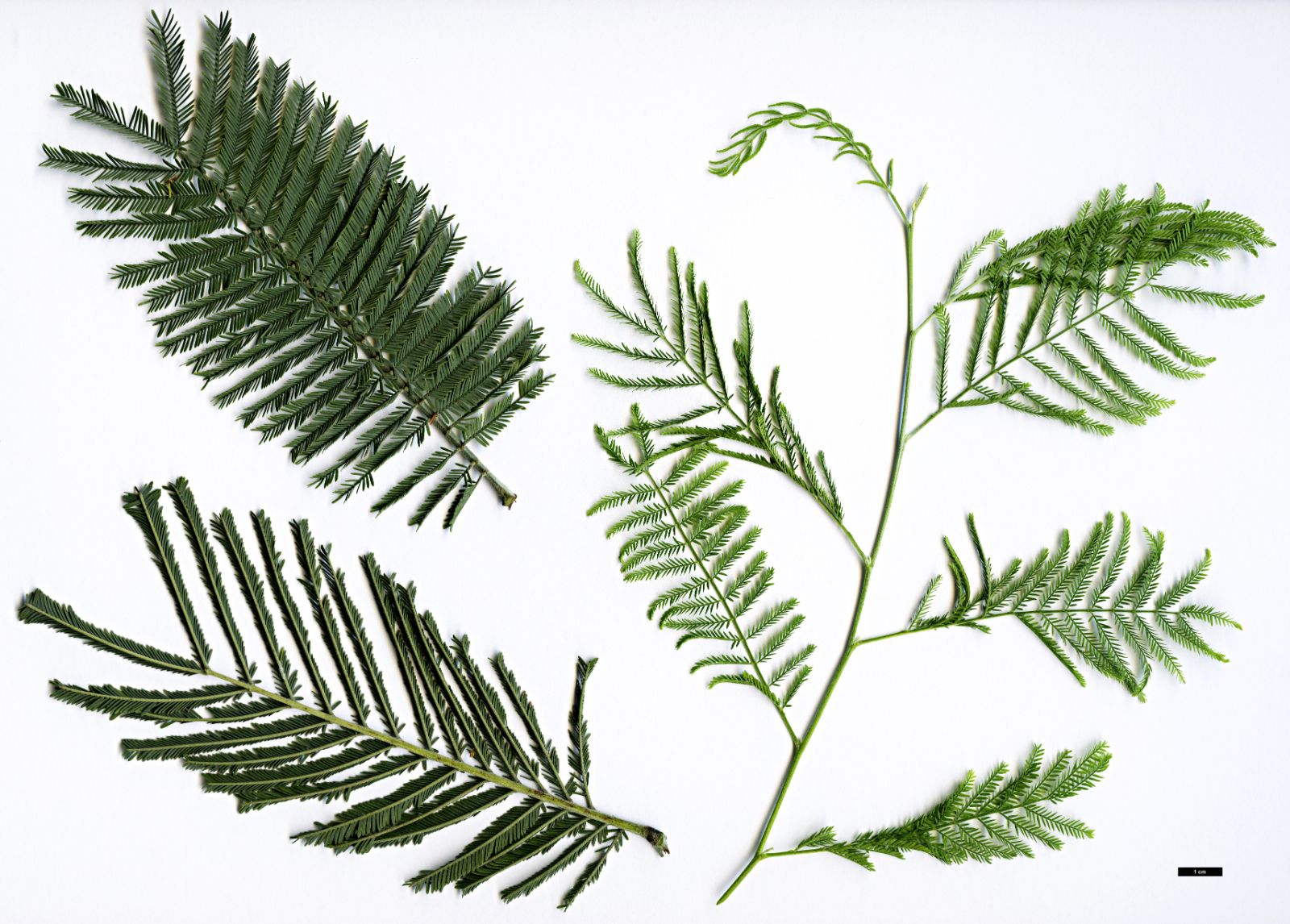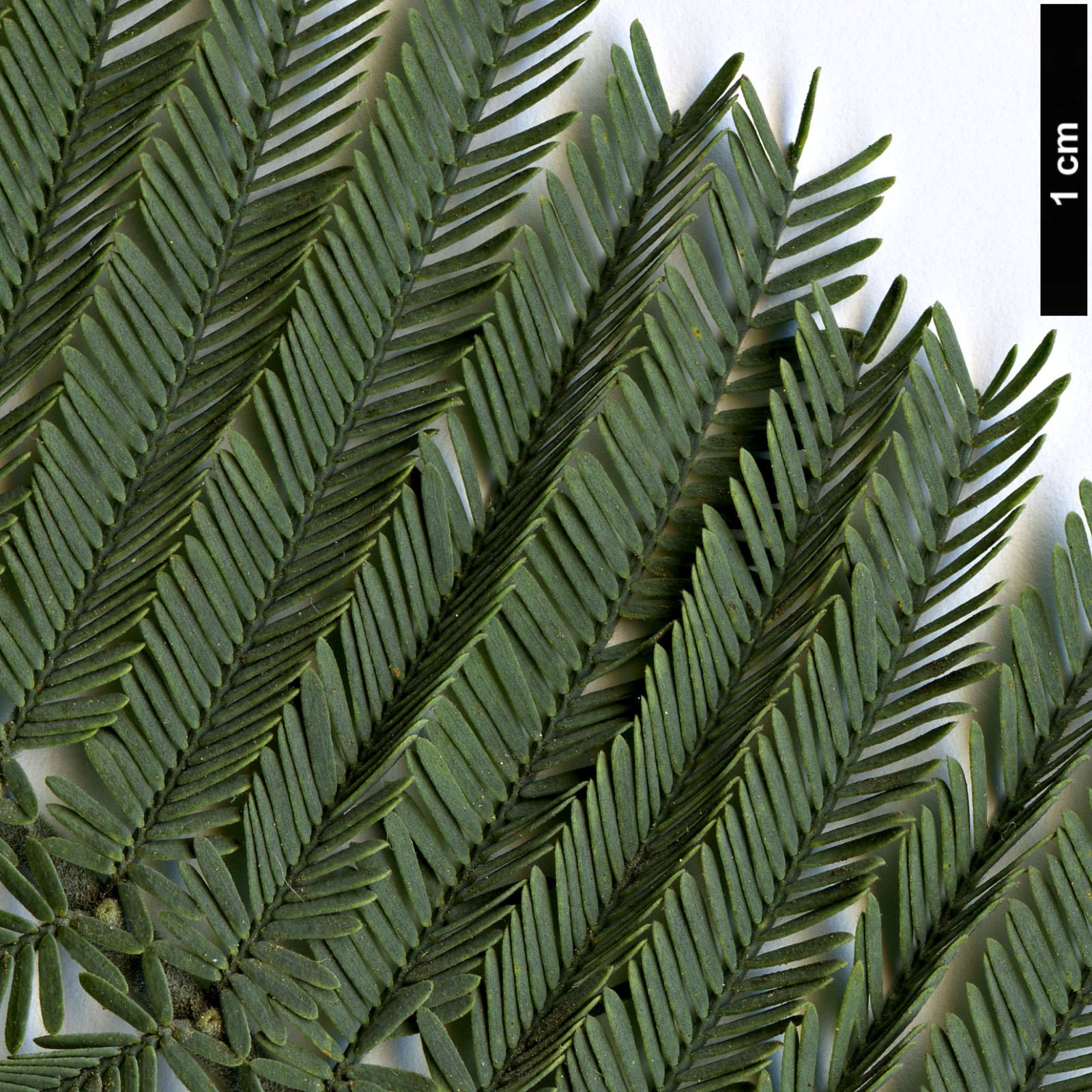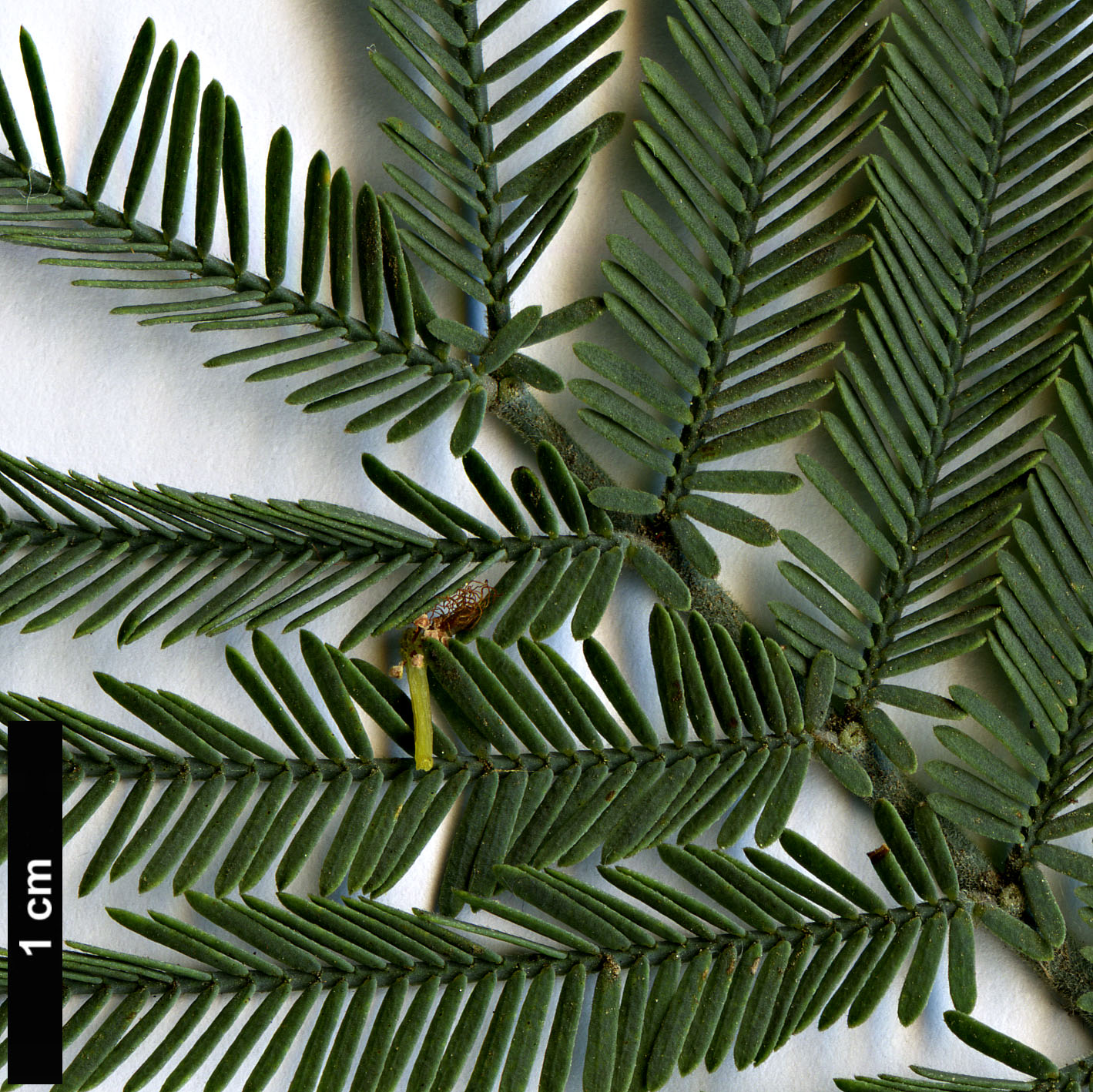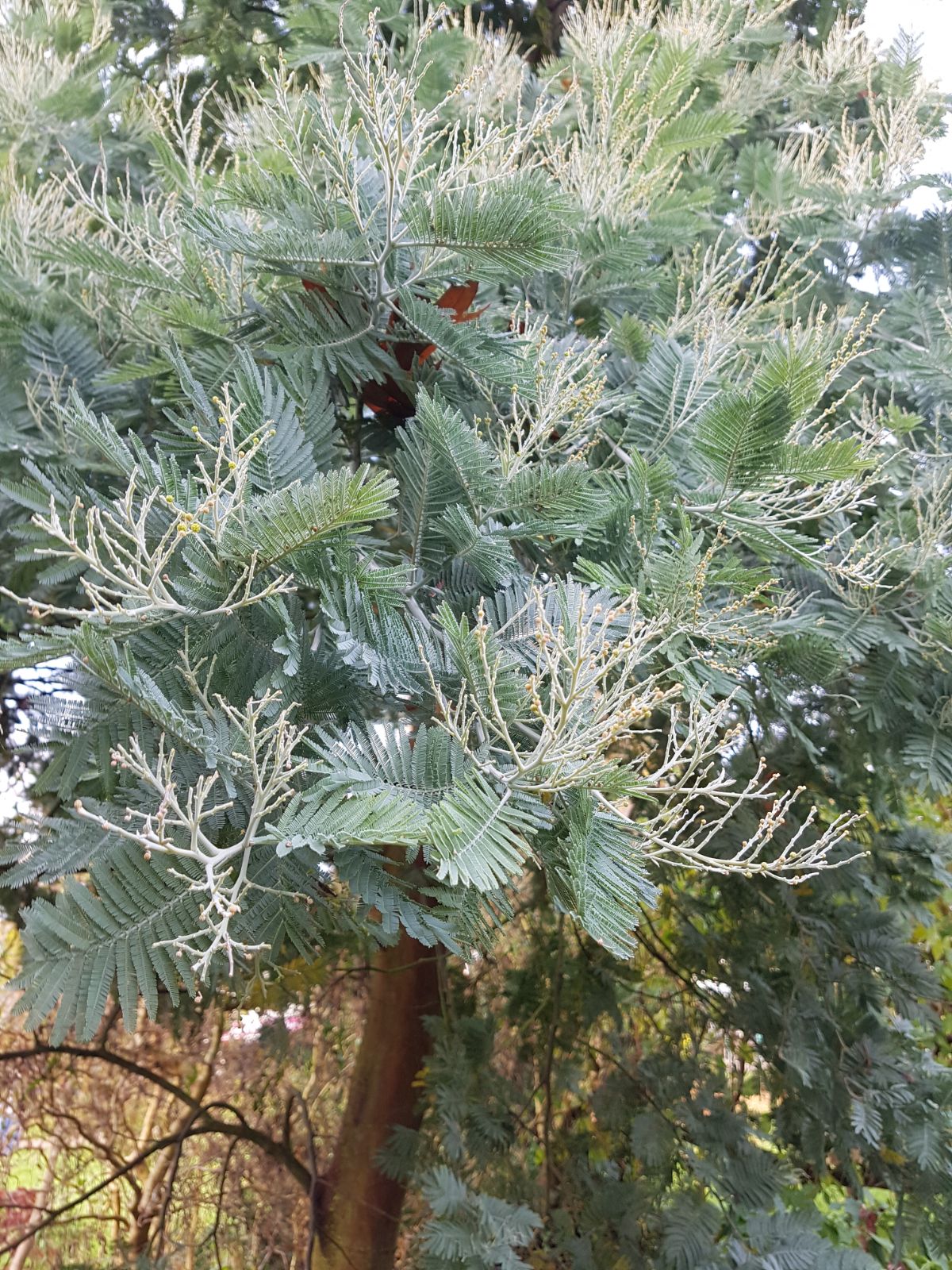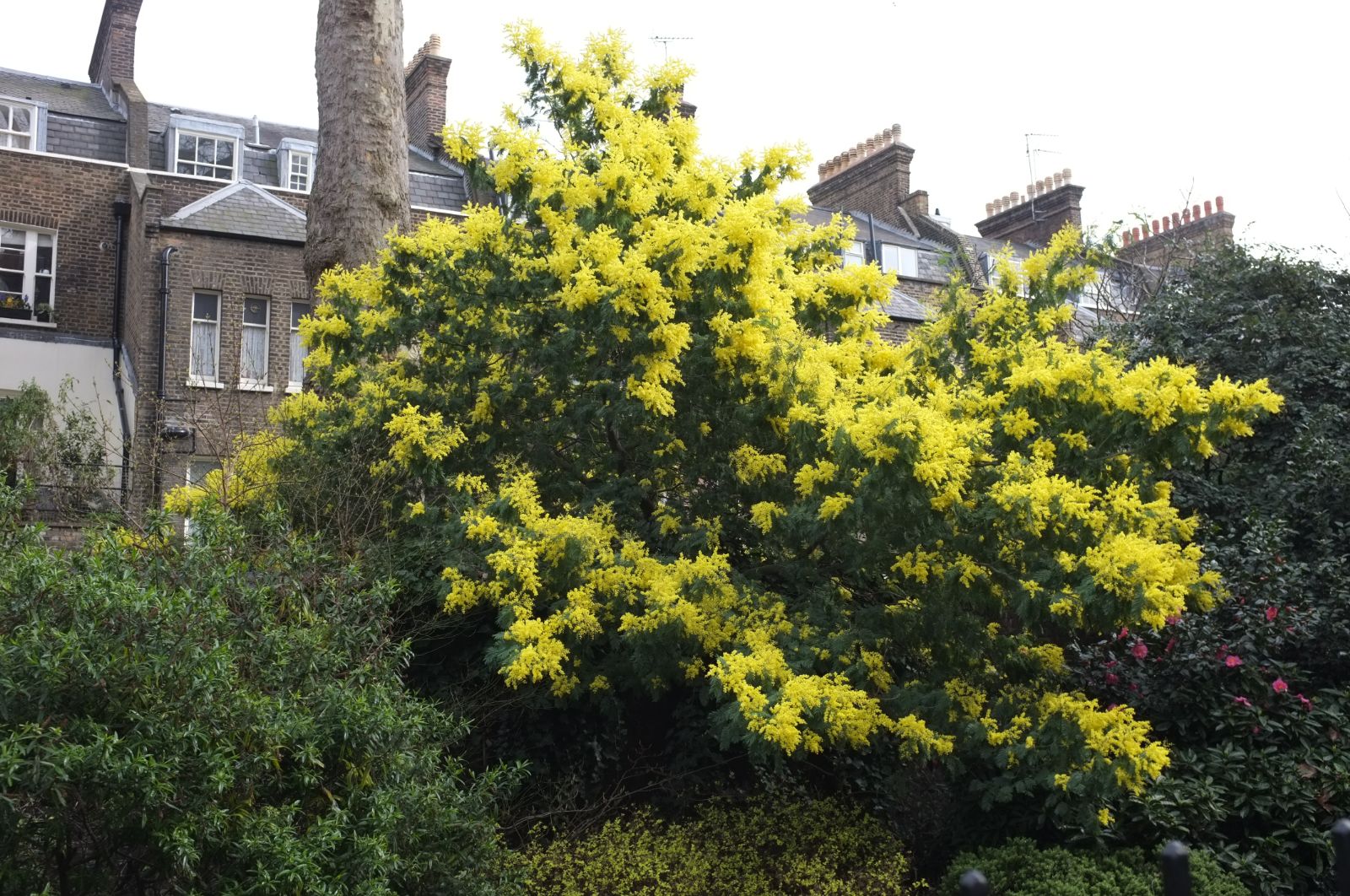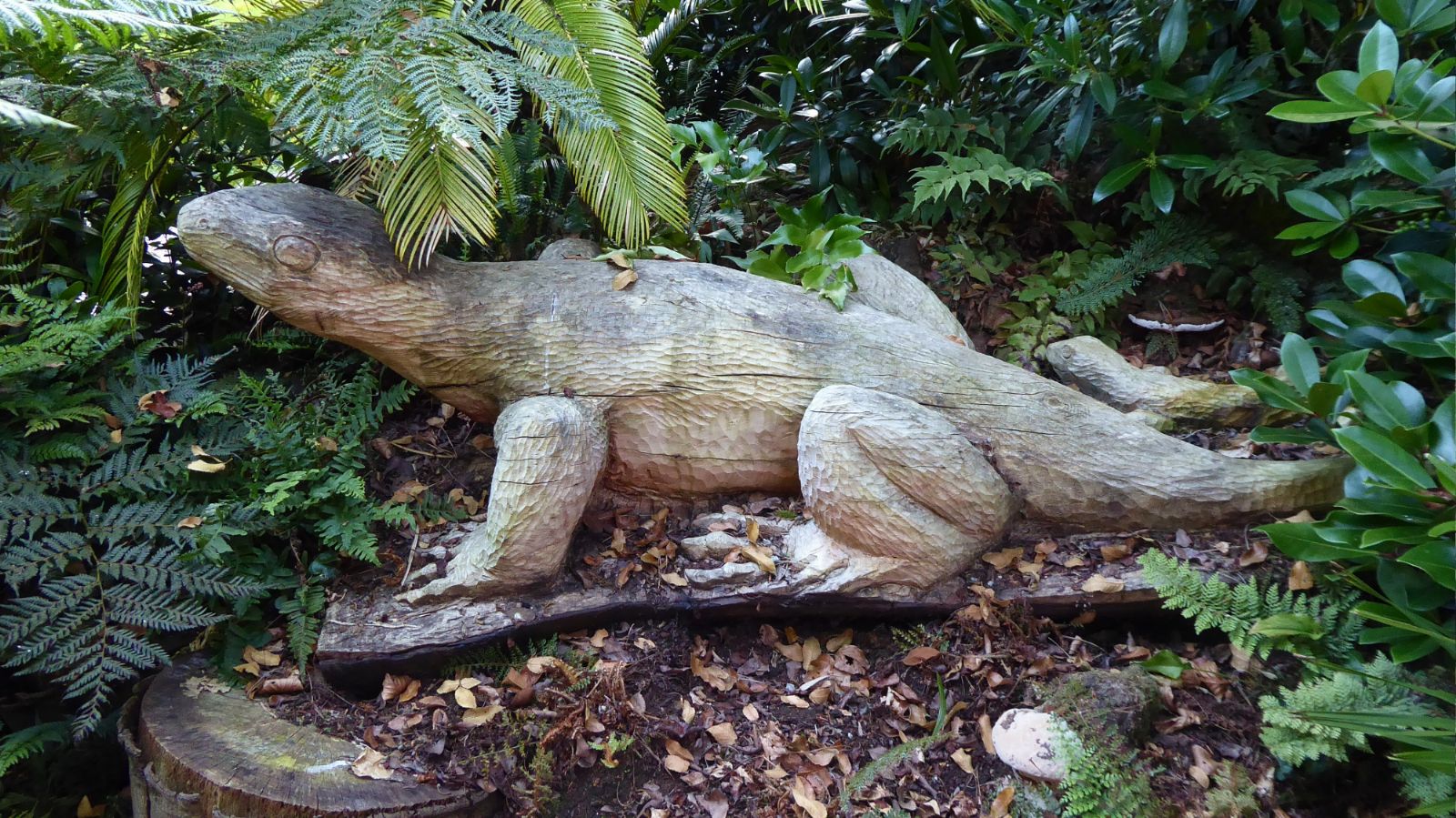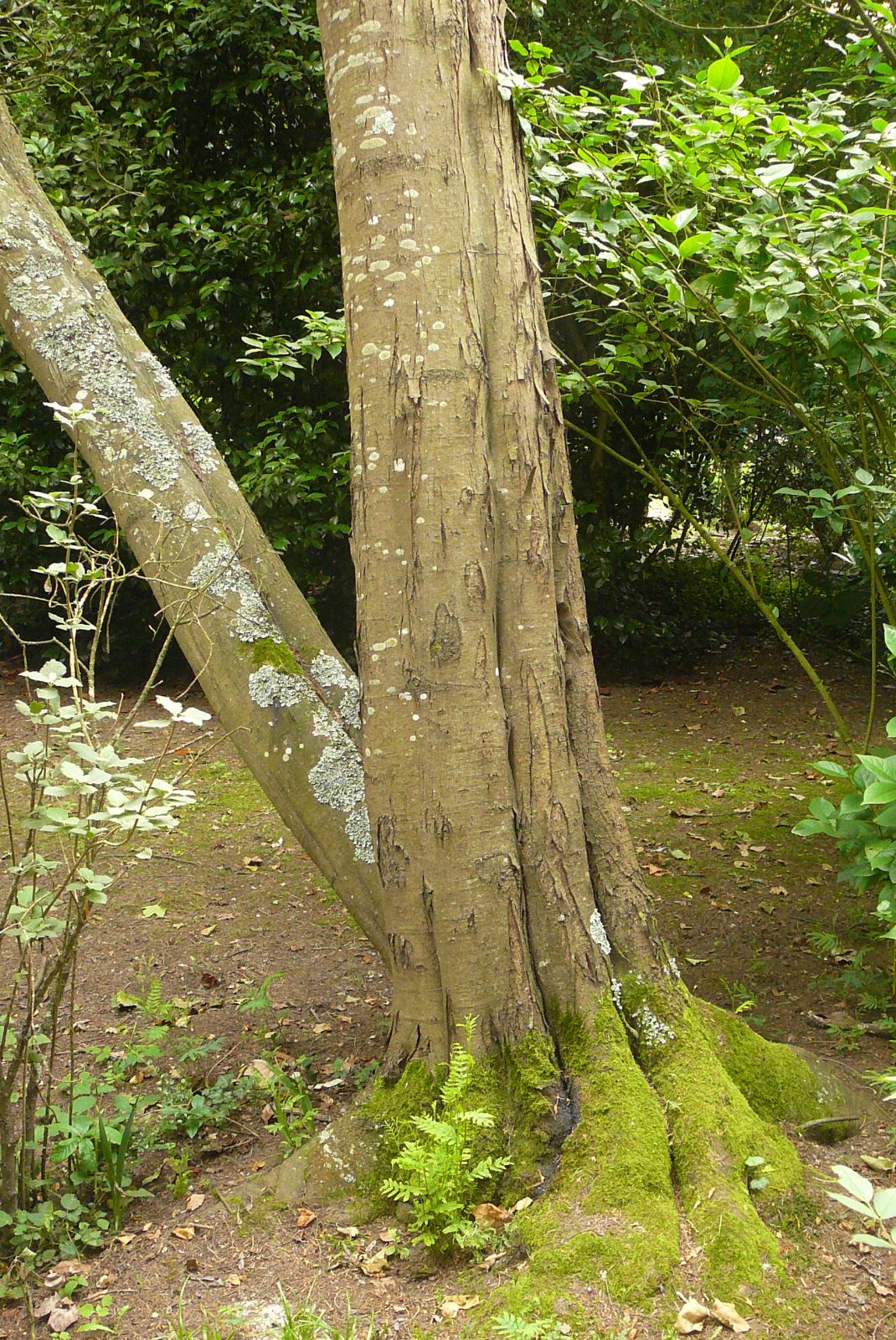Acacia dealbata
Credits
Article from Bean's Trees and Shrubs Hardy in the British Isles
Article from New Trees by John Grimshaw & Ross Bayton
Recommended citation
'Acacia dealbata' from the website Trees and Shrubs Online (treesandshrubsonline.
Genus
Common Names
- Silver Wattle
- Mimosa
Synonyms
- Acacia decurrens var. dealbata (Link) F. v. Muell.
Infraspecifics
An evergreen tree occasionally 100 ft high in a wild state, with a trunk as much as 11 ft in girth; young shoots angled, clothed with fine white down. Leaves doubly pinnate, 3 to 5 in. long, the main divisions (pinnae) in usually fifteen to twenty pairs, each 1 to 11⁄4 in. long, and bearing thirty to fifty pairs of tiny linear leaflets, which are about 1⁄6 in. long and 1⁄30 in. wide. All the parts of the leaves are covered with the same silvery down as the young shoots, but not so thickly. Flowers fragrant, produced in panicles of globose heads or balls, each panicle 3 to 4 in. long, each head 1⁄6 in. wide, yellow, opening (on outdoor plants) in late winter and early spring. Seed-pods blue-white, 2 to 3 in. long, 1⁄4 to 1⁄2 in. wide, flat.
Native of New South Wales, Victoria, and Tasmania; introduced from Tasmania in 1820. At Kew it has to be given cool greenhouse treatment but is successfully grown in many Irish, Cornish, and Devon gardens, also along the coasts of Sussex and Hampshire. At Abbotsbury, in Dorset, it reached 70 ft in height and produced good seed. Even as far east as Suffolk it has grown and flowered well in the open ground. Really severe winters like those of the early sixties will kill it or cut it to the ground over much of the country but it is, perhaps, our cool and cloudy summers that prevent it from developing its full beauty as a flowering shrub, abundant sun and heat being necessary if the wood is to ripen and produce the embryonic flowers. For this reason the silver wattle is most likely to prove a success in sunny coastal gardens, in a position protected from strong winds, but unfortunately it will not tolerate chalky soils.
It is remarkably beautiful on the French Riviera, especially about Cannes, whence it is that such large quantities of flowering branches are sent to Paris and London as ‘mimosa’. The beautiful silvery, feathery foliage and clear yellow, fragrant flowers make a charming and perfectly beautiful combination.
From New Trees
Acacia dealbata Link
Silver Wattle
Synonyms: Racosperma dealbatum (Link) Pedley
This species was described by Bean (B173) and Krüssmann (K55).
A decurrens (Wendl.) Willd.
Synonyms
Mimosa decurrens Wendl
subsp. subalpina Tindale & Kodela
This subspecies differs from the type in having shorter leaves (1.5–8.5 vs. 5–12 cm), and shorter pinnae (0.5–2.5 vs. 1.5–5.5 cm) and pinnules (0.1–0.4 vs. 0.15–0.6 cm). The flowering heads have fewer flowers (13–24 vs. 22–42) and the plant has a smaller stature, being a shrub or small tree to 5 m, rarely 10 m (vs. 30 m in subsp. dealbata). Chapman et al. 2001a, 2001b, Kodela & Harden 2001. Distribution AUSTRALIA: Australian Capital Territory, New South Wales, Victoria. Habitat Tall, open forest or woodland on mountain ridges, slopes and in gullies with streams. USDA Hardiness Zone 8–9. Conservation status Not evaluated. Illustration NT7.
Described only in 2001, Acacia dealbata subsp. subalpina is of great interest to gardeners in temperate areas, as it represents the highest-altitude provenance of the species. For most practical horticultural purposes it is very similar to typical A. dealbata in physical appearance, although subsp. subalpina is supposed to be shorter and smaller in its parts, but the fact that its range is principally above 700 m in the mountains of southeastern Australia (Kodela & Tindale 2001) is highly significant in terms of its potential extra hardiness. Subsp. subalpina has become widely cultivated, and is freely available in commerce, but in the United Kingdom at least its supposed advantage has yet to be put to the test, and Hogan (2008) has found that other high-altitude forms from mainland Australia are hardier. Its supposedly more compact stature may also be an advantage in smaller gardens, although a specimen in the Oxford Botanic Garden had reached 6 m before it was removed in 2007 (S. Andrews, pers. comm. 2007).

